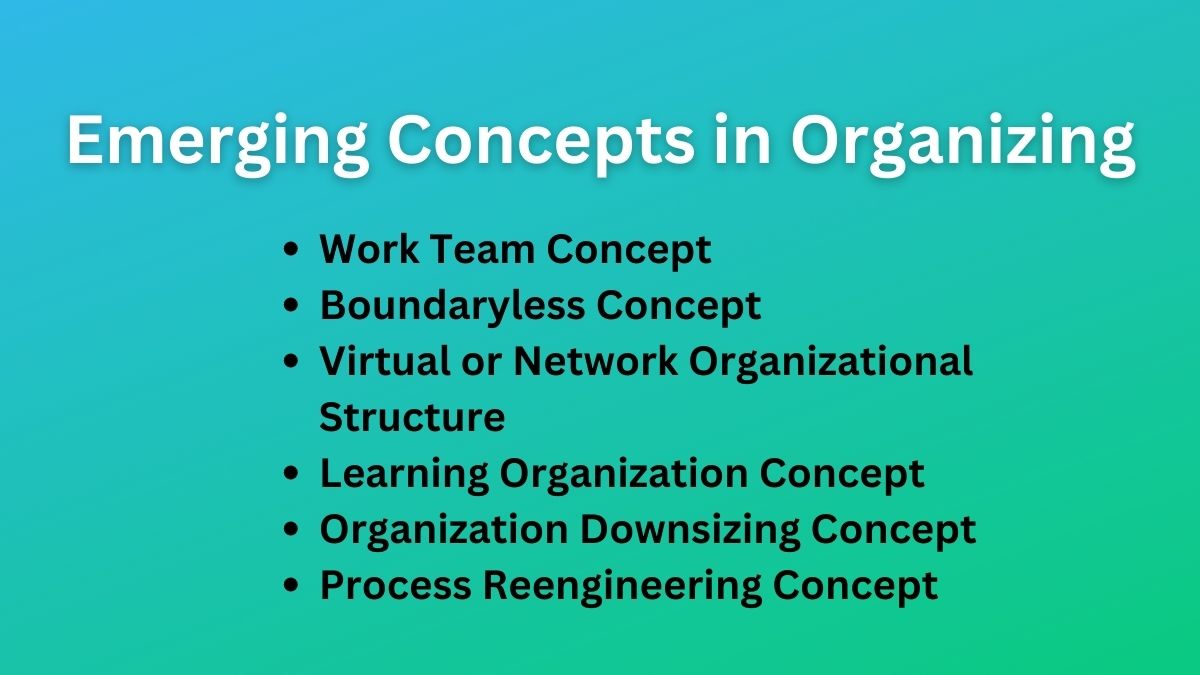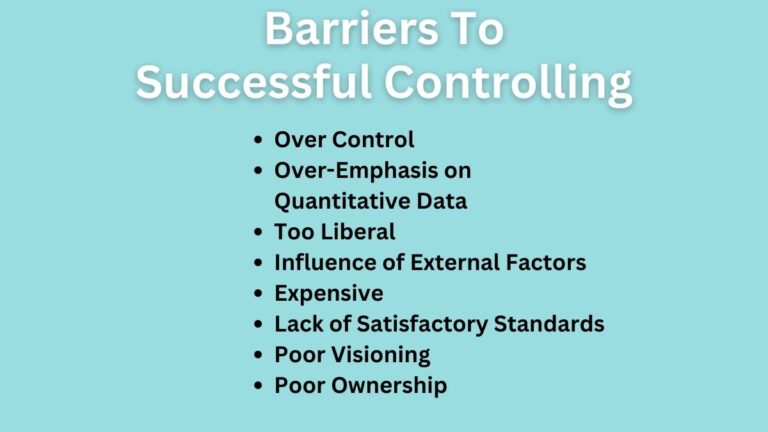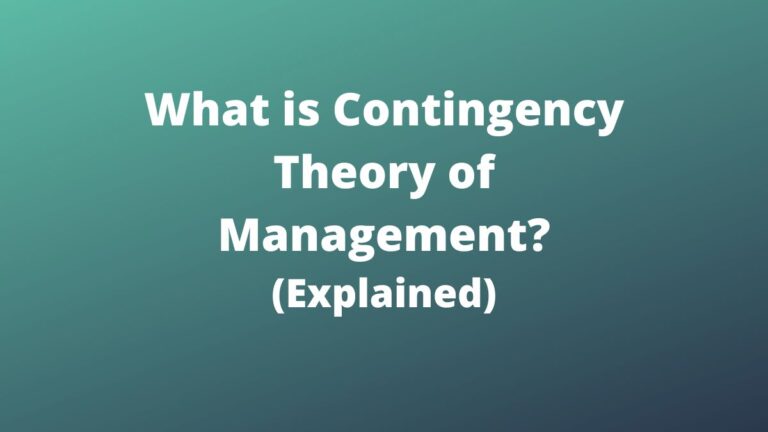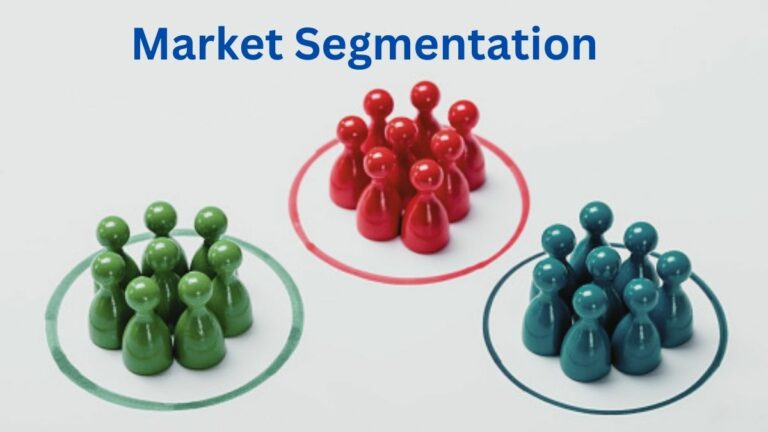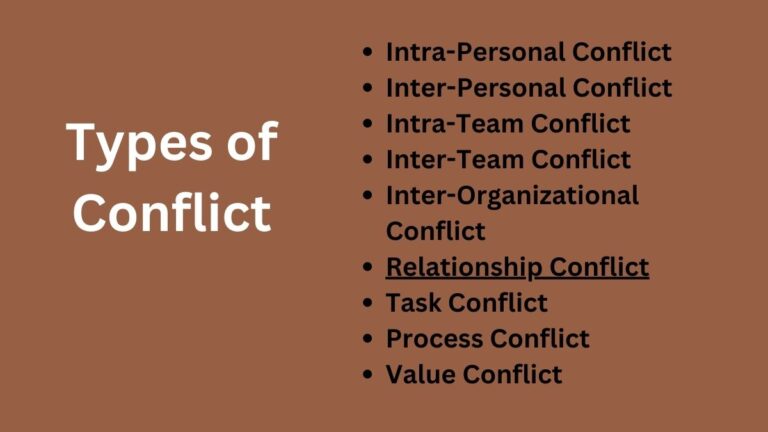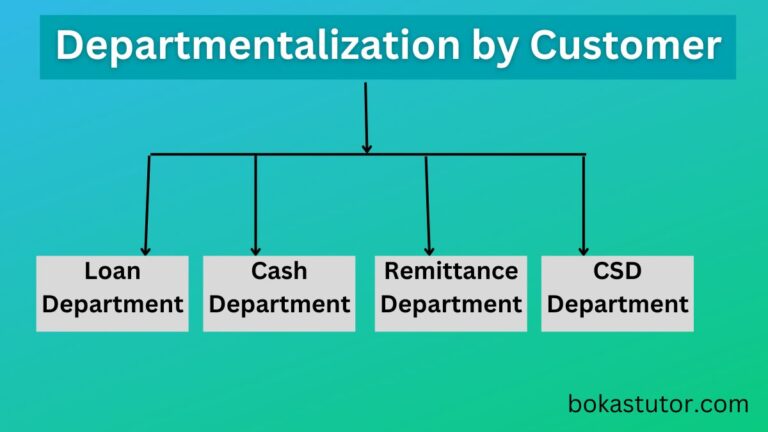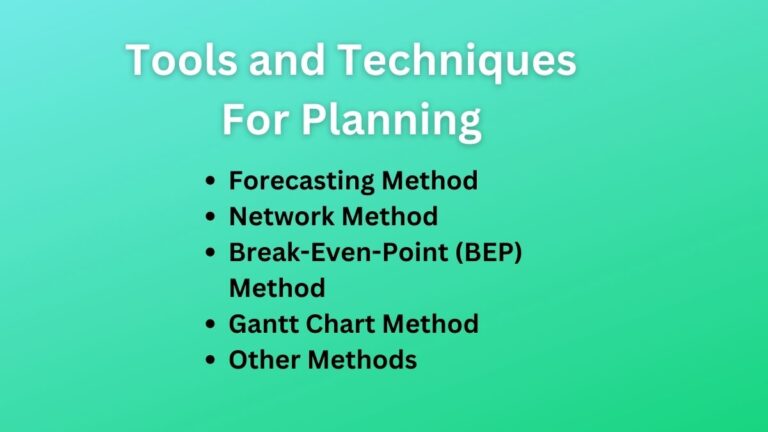6 Emerging Concepts in Organizing [Explained]
Emerging Concepts in Organizing
Many new ideas and concepts have been emerging as new approaches to organizing. Organizations need to adjust to the changing environment and present competitors.
Many new principles and concepts are emerging to manage the organization. Some of the organizing concepts are mentioned below:
Work Team Concept
The idea of a team is seen as a crucial tool for organizing job tasks. The departmental walls are destroyed, and the decision-making power is decentralized to the level of work teams. At the operational level, teams are created to boost employee performance and increase production.
Autonomous teams effectively lower stress and foster an atmosphere of creativity and invention. The sorts of teams currently used as the organizational structure include problem-solving teams, self-managed teams, cross-functional teams, quality circles, virtual teams, etc.
Boundaryless Concept
An organization that has no physical boundaries between departments or divisions is said to be boundaryless. Ideas, information, and actions are free to migrate to any location where they are most needed in such an organizational system.
Managers seek to eliminate the chain of command and have a limited span of control. The development of the boundaryless organizational structure is aided by factors such as globalization, online commerce, and new payment technologies.
Virtual or Network Organizational Structure
A virtual organizational system is created when an organization’s management uses various outside services to carry out organizational tasks. In this case, the company is free to choose any contractor to manufacture any component of a product wherever. Another name for it is outsourcing.
These organizations often lack departments and have an extremely centralized authority. These businesses establish a network of connections that enables them to outsource subsidiary tasks. However, they ought to concentrate on coordination, planning, and care functions.
Learning Organization Concept
In the modern world, it is thought that organizations must be built in a way that promotes change management, continuous learning, and capability growth. It is a byproduct of a society that values knowledge. To accomplish goals, everyone is willing to contribute their knowledge and thoughts. It fosters personal flexibility, inventiveness, and the ability to take calculated risks.
Organizations are regarded as learning institutions and provide an open atmosphere for learning and sharing ideas. Every member of this organization is required to contribute their knowledge, abilities, and ideas. There is no boundary for knowledge creation. The organizational structure, operational process, and educational system all remain dynamic.
Organization Downsizing Concept
Downsizing is the deliberate decrease of organizational units, hierarchies, and functions. It is a technique for reducing the size of organizations by removing the current departments, units, and functions. Additionally, it is a technique for organizational restructuring that aids in reducing the size of the organization.
To cut costs and boost efficiency, the management can lower the size of the workforce, get rid of some units, or combine some units. For organizational downsizing, they can also use retirement plans, firing workers, transfers, job sharing, etc.
Because of the more unstable business environment, shifting consumer preferences, quick technological advancements, etc., the organization must be downsized.
Process Reengineering Concept
It is a method of organizing in which commercial procedures are altered to create enhancements in crucial areas like price, quality, service, and speed. With this idea, working processes are reexamined, and efficiency is increased by replacing underperforming procedures. It makes an effort to emphasize value-added content while minimizing non-value-added content.
Process reengineering concentrates on making significant, extensive modifications to the current framework. Process reengineering typically involves replacing traditional, labor-intensive, and expensive procedures with new and improved ones in order to increase work efficiency and effectiveness.
Read Also: Types of Organizational Structures
Sajan Kushmi is a content writer with more than 4 years of experience. He holds BIM Degree. He write on the topics related to Management, Marketing, and Entrepreneurship.
